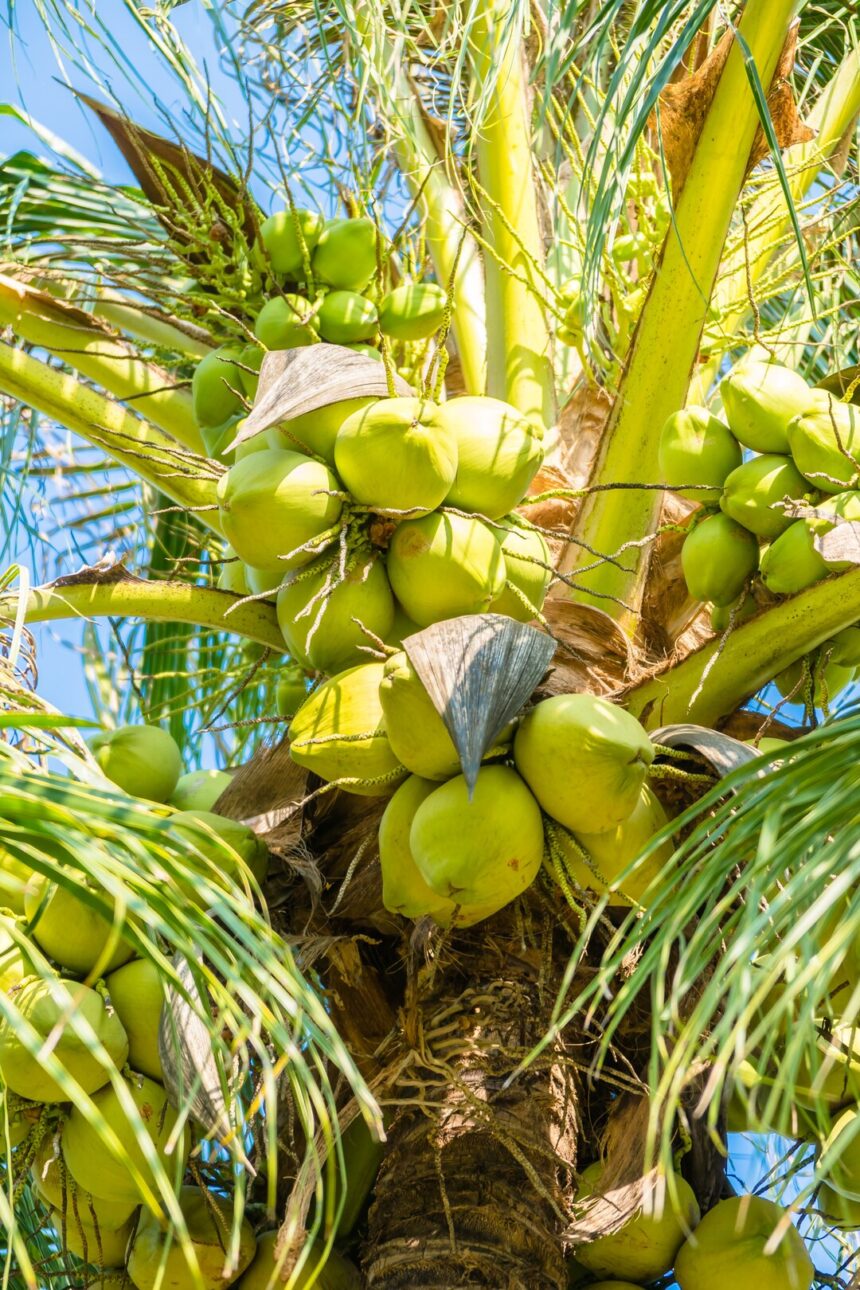Coconuts are a versatile and valuable crop, prized for their nutritious fruit, oil, water, and other by-products. In South Africa, coconut cultivation presents significant opportunities for farmers to diversify their income and contribute to the agricultural sector’s growth. However, successful coconut cultivation requires careful attention to soil, climate, water, and management practices. In this article, we’ll explore techniques for enhancing the quality and yield of coconuts in South Africa to maximize productivity and profitability.
Understanding Coconut Cultivation:
Coconut palms thrive in tropical and subtropical climates with well-drained soil and abundant sunlight. In South Africa, coconut cultivation is primarily concentrated in the coastal regions of KwaZulu-Natal and Mpumalanga, where conditions are favorable for coconut growth. Successful coconut cultivation requires selecting suitable varieties, providing optimal growing conditions, managing pests and diseases, and implementing effective harvesting and processing techniques.
Techniques for Enhancing Quality and Yield:
1. Variety Selection:
- Choose coconut varieties that are well-adapted to the local climate and soil conditions.
- Select varieties known for their high yield, disease resistance, and quality of fruit and oil.
- Consider factors such as growth rate, nut size, taste, and market demand when selecting coconut varieties for cultivation.
2. Soil Preparation:
- Ensure that coconut palms are planted in well-drained, sandy or loamy soil with good water-holding capacity.
- Conduct soil tests to determine nutrient levels and pH, and amend the soil as needed with organic matter and fertilizers.
- Implement soil conservation measures such as contour planting and mulching to prevent erosion and improve soil structure.
3. Water Management:
- Provide adequate irrigation to coconut palms, especially during the dry season, to ensure optimal growth and fruit development.
- Use efficient irrigation systems such as drip irrigation or sprinklers to minimize water wastage and improve water efficiency.
- Monitor soil moisture levels regularly and adjust irrigation schedules based on weather conditions and plant needs.
4. Nutrient Management:
- Apply balanced fertilizers containing essential nutrients such as nitrogen, phosphorus, potassium, magnesium, and micronutrients.
- Use organic fertilizers such as compost or manure to improve soil fertility and promote healthy coconut growth.
- Avoid over-fertilization, which can lead to nutrient imbalances and environmental pollution.
5. Pest and Disease Control:
- Monitor coconut palms regularly for signs of pests and diseases, such as coconut mites, bud rot, or lethal yellowing disease.
- Implement integrated pest management (IPM) strategies, including cultural, biological, and chemical control methods, to manage pest and disease outbreaks effectively.
- Practice proper sanitation and hygiene measures to minimize the spread of pests and diseases within coconut plantations.
6. Harvesting and Processing:
- Time coconut harvesting to coincide with optimal fruit maturity, typically when the fruits are fully developed and mature.
- Harvest coconuts using long-handled harvesting poles or by climbing the palm tree, taking care to avoid damage to the fruits and tree.
- Process harvested coconuts promptly to preserve quality and prevent spoilage, extracting coconut water, meat, and oil for various uses.
Enhancing quality and yield in coconut cultivation requires a combination of sound agronomic practices, variety selection, and management techniques. By focusing on soil preparation, water and nutrient management, pest and disease control, and harvesting and processing, farmers can optimize productivity and profitability in coconut cultivation in South Africa. With careful planning and implementation of these techniques, coconut farming has the potential to become a sustainable and lucrative venture, contributing to economic development and food security in the region.
Join 'Farmers Mag' WhatsApp Channel
Get the latest Farming news and tips delivered straight to your WhatsApp
CLICK HERE TO JOIN






